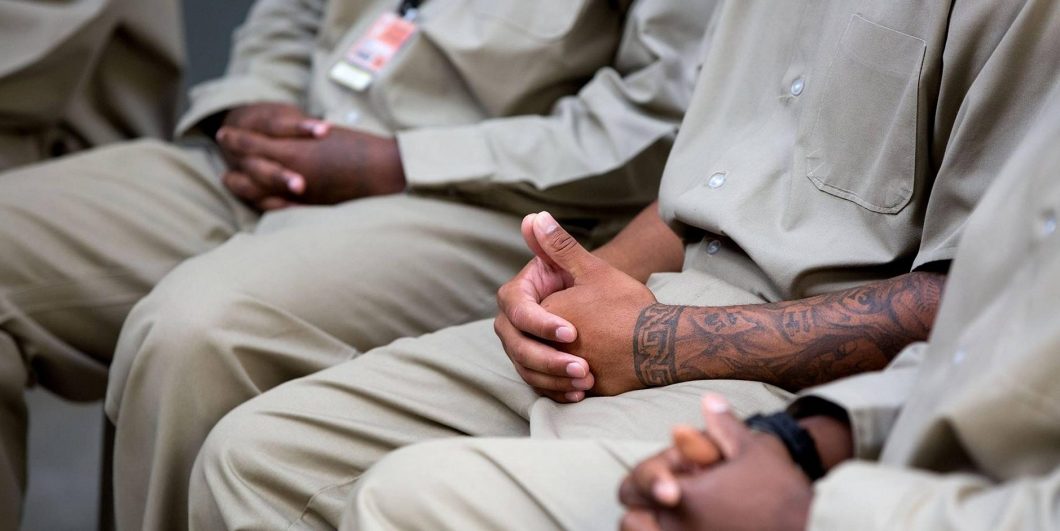The Undeniable Reality of Mass Incarceration in America
If one sought to determine whether there are too many cars and trucks in use in the United States, it would hardly make sense to look only to American-made vehicles. After all, to limit the inquiry in such an artificial manner would grossly undercount the actual number of cars clogging American roadways and polluting our environment. Quite obviously, the total number of motor vehicles would have to be ascertained, and only then could the normative issue be reached.
This logical point is overlooked in Professor Barry Latzer’s interesting—yet, in my view, quixotic—attempt to rebut the prevailing wisdom that the United States, the world’s leading jailer by far, has too many people behind bars. In his effort to narrow the stunning divide between the U.S. and other industrialized Western nations on the rates at which they incarcerate their respective citizens, Latzer’s argument is limited to people housed in prisons. His analysis thus quite explicitly ignores the almost 800,000 people who are detained, at any given point in time, in city and county jails across America housing half as many prisoners as state and federal prisons do.
Excluding jail inmates in a debate concerning over-incarceration, however, is just as illogical as ignoring foreign-manufactured vehicles from an assessment of the number of automobiles on the road. The place where prisoners are housed (prison versus jail) is just as irrelevant as the place of manufacture of automobiles in arguments over whether we have too many inmates and cars in the United States. To have any real-world significance, each normative inquiry must begin with an accurate appraisal of the empirical phenomenon being assessed. In the case of over-incarceration, that means factoring in the hundreds of thousands of people locked up in jails along with their counterparts in federal and state prisons.
According to the U.S. Department of Justice, “County and city jails in the United States reported a total confined population of 745,200 inmates at midyear 2017.” In that same year, the government reported that prisons contained 1,489,363 inmates. Despite the fact that non-lawyers often use the terms “prison” and “jail” interchangeably, prisons are reserved for persons convicted of felonies and sentenced to more than a year behind bars. Jails, by contrast, house less serious convicts serving custodial sentences of one year or less and persons being held on pending charges not yet adjudicated. People in jails and prisons alike are incarcerated and thus directly relevant to debates regarding over-incarceration.
To be sure, almost two-thirds of jail inmates are being held on pending charges instead of serving sentences for previously adjudged violations.[1] This fact, however, does not justify ignoring jail inmates. For starters, thirty-five percent of persons in jail have been convicted of a crime. In this respect, they are indistinguishable from their prison counterparts (except potentially in the length of time they will ultimately serve behind bars). Although the sixty-five percent who are being held on pending charges have not yet been convicted, statistics show they will almost certainly be convicted once their cases are resolved.[2] Once convicted, pretrial detainees are given full credit against their eventual sentences for time spent in pretrial lockup.[3] The credit for pretrial detention shows that being locked up in jail, even on a pretrial basis, is, in practical terms, punishment. As such, people deprived of their liberty in local jails simply must be taken into account in determining whether or not, as Latzer aptly puts it, “we are imposing too much punishment.”
By limiting his focus to the ranks of state prison inmates, Latzer unduly minimizes the breathtaking severity of America’s criminal justice system. State prisons, after all, contain our society’s worst and most inveterate offenders. Ignoring inmates in local jails (not to mention federal prisoners, who are overwhelmingly incarcerated for nonviolent offenses and offenses not involving firearms) adds superficial plausibility to Latzer’s contention that “retributive grounds alone” justify the very long sentences to which he attributes America’s shockingly high incarceration rate.
Other than pretrial detainees held on the sort of very serious charges that will eventually result in long sentences in state prison, jail inmates are minor offenders at best. In fact, persons in jail are often being punished or facing conviction for only misdemeanors and other minor infractions, such as driving on revoked or suspended licenses, or nonpayment of child support or court fines—“violations” that may be more attributable to poverty than deviancy.[4] The root of the problem is overcriminalization, or the increasing availability and use in recent decades of criminal sanctions for moral offenses, administrative rule violations, and other wrongs better suited for informal social sanctions or civil enforcement. (Although overcriminalization often elevates minor wrongs into low-level crimes, it can also be used by overzealous prosecutors to transform minor wrongs into major crimes.)
As a leading critic of mass incarceration has explained:
The U.S. criminal system is far larger and less principled than even the incarceration critique suggests because the prison population accounts mainly for felony offenders. . . . But they are only the tip of the iceberg. An estimated ten million misdemeanor cases are filed annually, flooding lower courts, jails, probation offices, and public defender offices. While these individuals are largely ignored by the criminal literature and policymakers, they are nevertheless punished, stigmatized, and burdened by their convictions in many of the same ways as their felony counterparts.
As to such offenders, the retributive case in favor of incarceration is immeasurably weaker. Indeed, the picture that emerges is of a bureaucratic criminal justice system that mechanically metes out disproportionately severe sentences that simply are not necessary to safeguard the public.[5]
Although I have been discussing inmates, it bears emphasis that the extreme (and often senseless) severity of American criminal justice is hardly limited to those who happen to be confined within prison and jail walls on any given day. In addition to the 2.3 million people behind bars (as of 2018), another 4.5 million people are under criminal justice supervision through early release from incarceration (parole) or release in lieu of incarceration (probation). These people are overwhelmingly guilty only of minor, nonviolent crimes, yet they are forever branded as criminals and forced to live under ever-present risk of being arrested and jailed at any time for any violation, however technical, of the detailed terms of their supervised release.[6] Thus, far from being an act of grace or mercy, probation and parole “set people up to fail with long supervision terms, onerous restrictions, and constant scrutiny . . . and therefore end up channeling people into prisons and jails.”
In this respect, it should be noted that many state prisoners may also not be as morally blameworthy as Latzer supposes. According to federal data, more than half of all jail and prison inmates, or an estimated half a million people, suffer from mental illness, including major mental disorders such as schizophrenia, bipolar disorder, and major depressive disorder. This is significant because, if untreated, mental illness can lead to substance abuse and other illegal acts that, in turn, result in arrest and prosecution, a lamentable phenomenon known as the “criminalization of mental illness.”
In his bold claim that, due to underreported and unsolved crimes, America does not have enough people behind bars, Latzer overlooks the fact that U.S. prisons are already badly overcrowded. Twenty-four states and the federal system exceeded their lowest capacity limit in 2017; another sixteen states were at or above ninety percent of that limit. If lawmakers were persuaded of Latzer’s stunning claim that we need to send considerably more people to jail, surely they would create additional prison capacity; instead, there has been a concerted effort in recent years, at both the federal and state level, to reduce the number of people in prison, resulting in a current national incarceration rate that has dipped to levels not seen in decades.
In the end, I remain convinced of the prevailing wisdom that the United States has far too many people behind bars. Given that Europe and Canada experienced correspondingly large reductions in violent crime at the same time as America without the extreme sentencing policies that led to mass incarceration, it should be obvious that a bloated prison system is not necessary to safeguard the public. Indeed, a good case can be made that our bloated carceral state makes the public less safe by shifting scarce resources from crime prevention to incarceration and making released offenders more (not less) likely to reoffend. We would be much better off as a society—both safer and truer to our libertarian ideals—if we reserved prisons and jails exclusively for our most dangerous and most incorrigible criminals, made serious efforts to rehabilitate instead of merely warehouse inmates, and relied on less-invasive means to address other social problems.
[1] According to the most recent government data available, “[a]bout 65% (482,000) of the confined [jail] inmates were awaiting court action on a current charge. The remaining 35% (263,200) were sentenced or convicted offenders awaiting sentencing.”
[2] Recent empirical studies have found that, as compared to similarly situated persons released prior to trial, pretrial detainees are significantly more likely to plead guilty or, in the event of trial, be found guilty. It is commonly estimated that approximately ninety percent of criminal defendants plead guilty.
[3] See, e.g., 18 U.S.C. § 3585(b). Presumably, time spent in jail, on pretrial detention or otherwise, has a lot to do with the fact, noted by Latzer, that “30 percent of all convicted felons and 22 percent of violent offenders are released without spending a single day in prison.”
[4] In 2017, 228,300 people were in jail for misdemeanors or other infractions. The National Association of Criminal Defense Lawyers has carefully documented the serious problems stemming from the explosion of prosecutions in overburdened misdemeanor courts.
[5] A leading critic of mass incarcerations has demonstrated that much of the recent growth in prison population is attributable solely to increasingly aggressive charging decisions by prosecutors: “[O]ver the 1990s and 200s, crime fell, arrests fell, and time spent in prison remained fairly steady. But even as the number of arrests declined, the number of felony cases filed in state courts rose sharply. In the end, the probability that a prosecutor would file felony charges against an arrestee basically doubled, and that change pushed prison populations up even as crime dropped.” See John F. Pfaff, Locked In: The True Causes of Mass Incarceration and How to Achieve Real Reform 127 (2017).
[6] See generally Alice Goffman, On the Run: Fugitive Life in an American City (2014).



